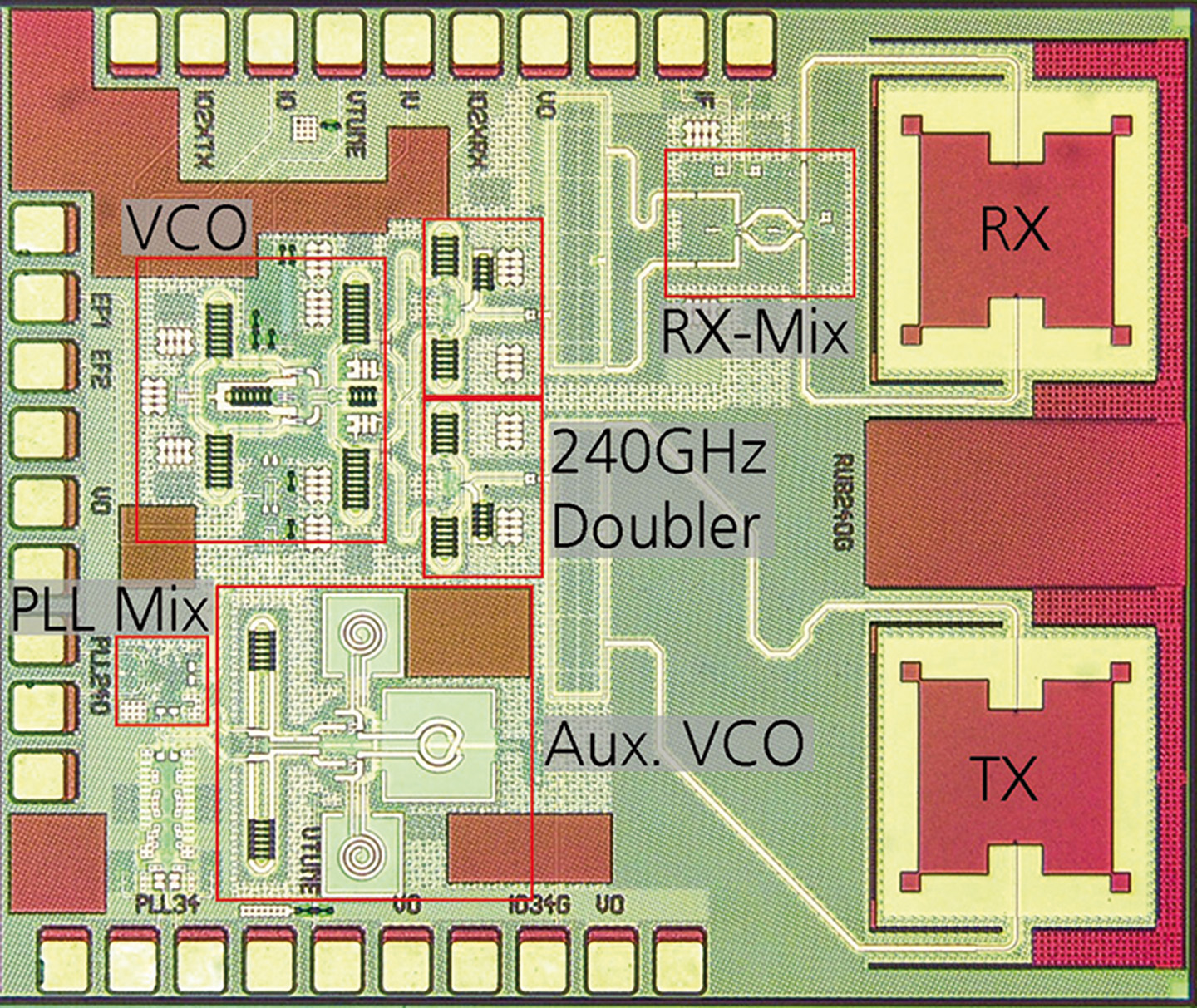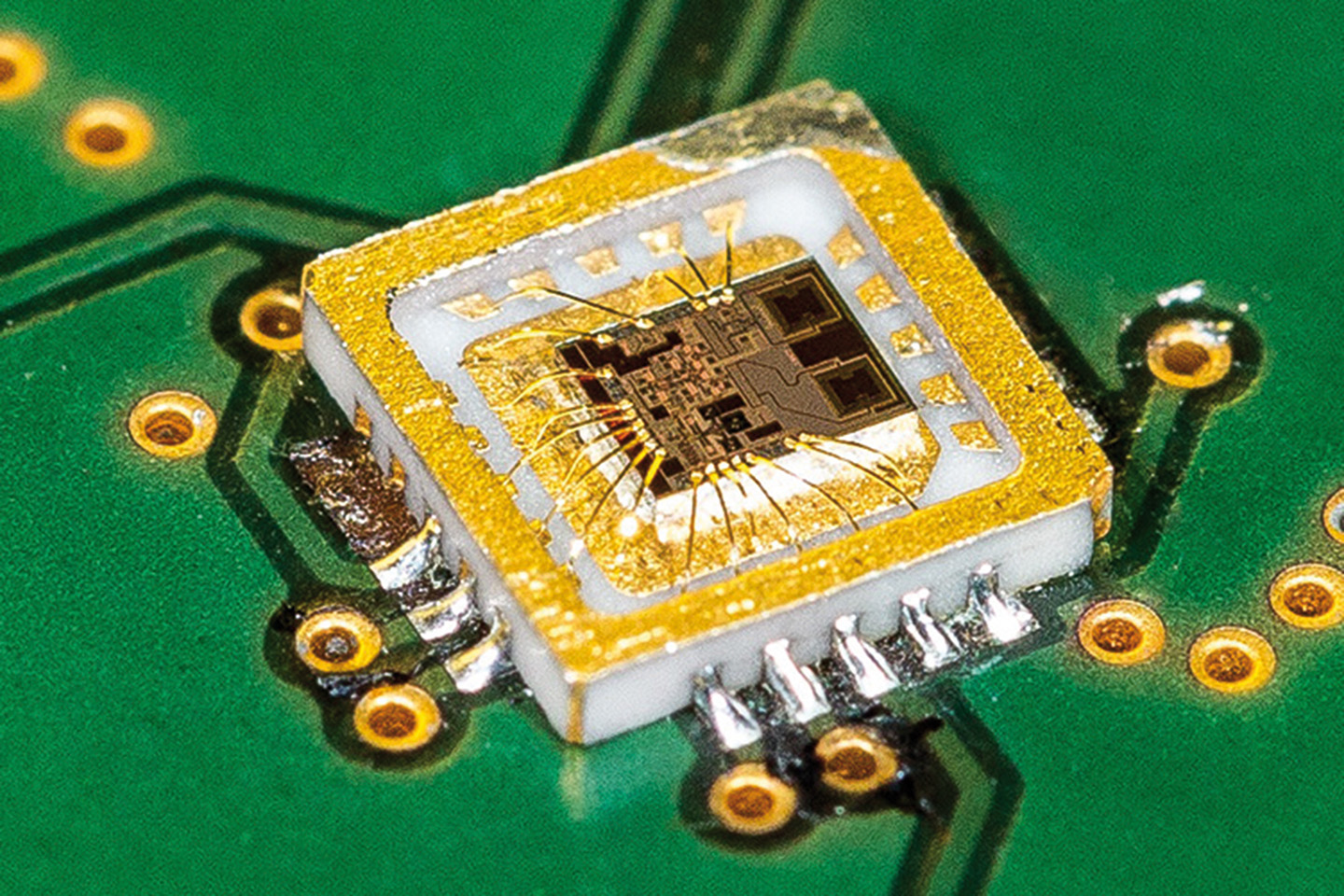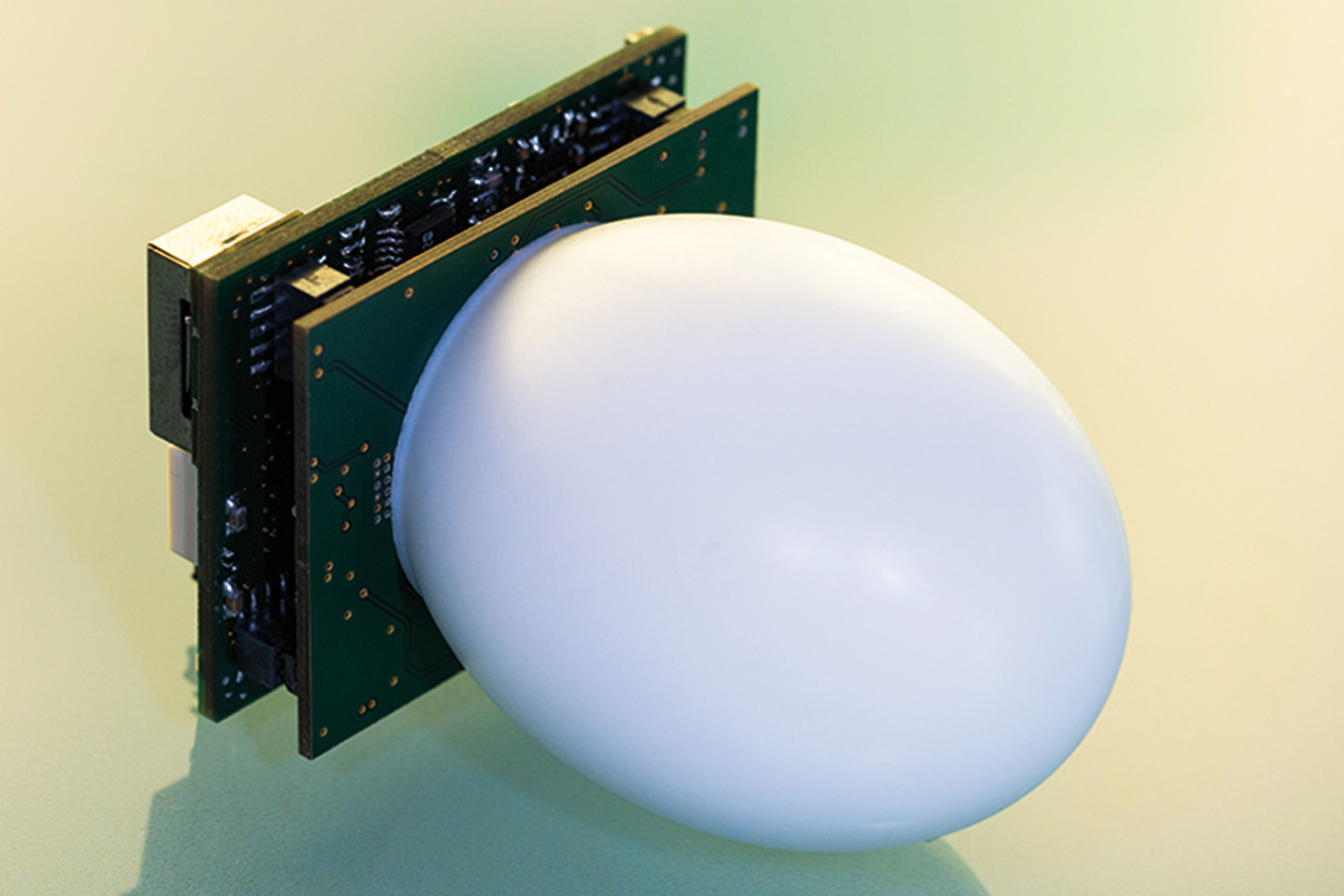High-Resolution 240-GHZ Radar with SiGe Chip





High frequencies above 200 GHz produce the finest radar resolutions, but up to now these were very expensive and elaborate. SiGe chip technology breaks this association.
Highest frequencies for the finest resolution
Due to the small wavelength, radar sensors above 200 GHz produce resolutions which could previously only be achieved with laser measuring systems. The 240-GHz frequency band with a free space wavelength of 1.25 mm is particularly attractive due to license-free ISM operation (2 GHz bandwidth). It not only offers range measurements with micrometer precision and a well-focused beam, but also imaging radar scanners which produce images with millimeter resolution through SAR processing or real aperture scanning (in reflection or transmission). This opens up completely new applications for millimeter wave technology. These convincing characteristics and the potential of these frequency bands do, however, involve very sophisticated high frequency techniques and, hence, very expensive sensors.
240 GHz radar using modern SiGe technology
The advances in modern silicon technology now allow critical frequencies over 300 GHz and therefore facilitate the exploitation of the upper millimeter wave domain using inexpensive technology. When implementing the 240-GHz radar system, Fraunhofer FHR opted for the B11HFC technology from Infineon. Thanks to the fast SiGe bipolar transistor, this technology offers an adequate high frequency performance as well as additional components such as a special pn-varactor diode for broadband signal generation and complete CMOS digital technology for logic blocks and mixed-signal circuits. Within the framework of the existing cooperation between the Ruhr University in Bochum, Fraunhofer FHR and Infineon Technologies, a 240-GHz radar chip was designed which not only contains all of the high-frequency circuit elements necessary to create a transmit signal but also the receivers, and therefore the core of a radar system. The front end of the radar is optimized for broadband operation and allows FMCW frequency ramps with a width of up to 61 GHz and therefore significantly exceeds the resolutions that can be achieved with conventional radar systems.
Solution: on-chip antennas
Although modern transistors are becoming increasingly faster and allow higher frequencies, the environment cannot always be scaled accordingly. Although signal generation, lines, couplers and receivers can be micro-electronically integrated on a chip at 240 GHz, the contacting of the antenna poses a real problem. At 240 GHz, even the shortest possible bond wire has a very high inductance with the result that it almost completely reflects the signal. Fortunately, the dimensions of an antenna scale proportionate to the frequency and hence, it can be compactly integrated on a chip at 240 GHz. This high degree of integration greatly simplifies the entire assembly and connection process. The antenna no longer needs to be bonded. Simple electronic casings and board material can be used as the radar chip is now only contacted with electronic signals (<5 GHz). This ultimately means that a 240-GHz radar is easier to produce and less expensive than conventional millimeter wave sensors. Hence, the trend towards increased costs with frequency was not only stopped, but reversed.
Compact radar sensors
Building on the radar chip with integrated transmit and receive antennas, this was later mounted on a conventional FR4 board in a QFN package. Further electronic components were also added to create a compact radar sensor.
In addition to the radar chip, commercial electronic components for voltage supply, signal stabilization in a phase-locked loop, digitalization of the receive signal and interface adaptation (here: USB connection to computer) are also necessary. A plastic lens, which also serves as a radome, was placed over the radar chip for directional measurements. Using a bandwidth of 40 GHz, radar measurements with a resolution better than 4 mm and range measurements with micrometer precision were demonstrated with this radar sensor. The measurement data is transferred via USB interface directly to a computer for evaluation thus paving the way for flexible utilization.